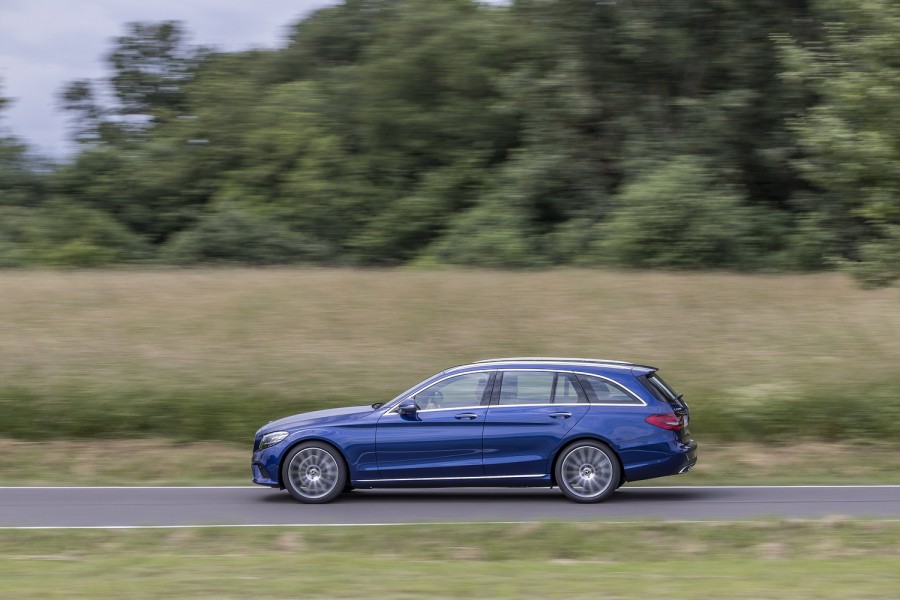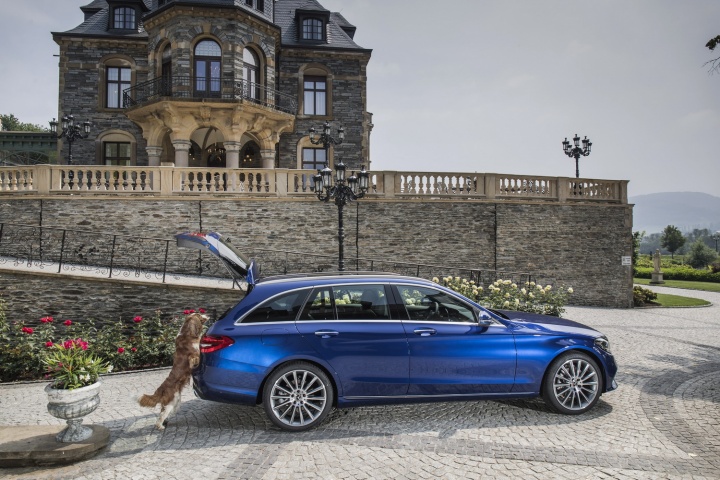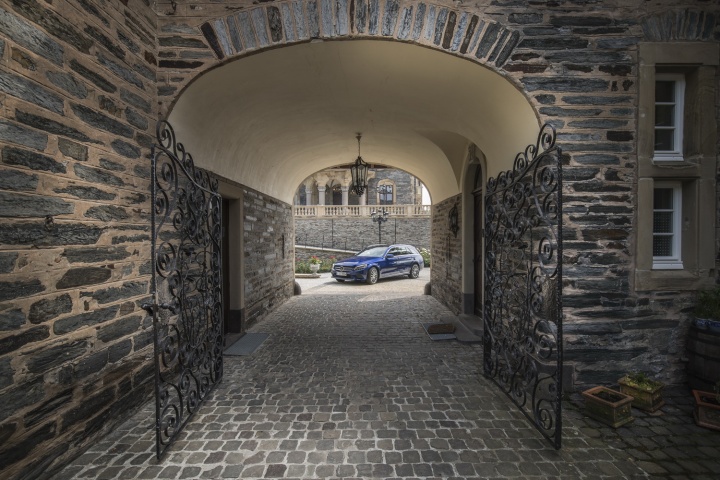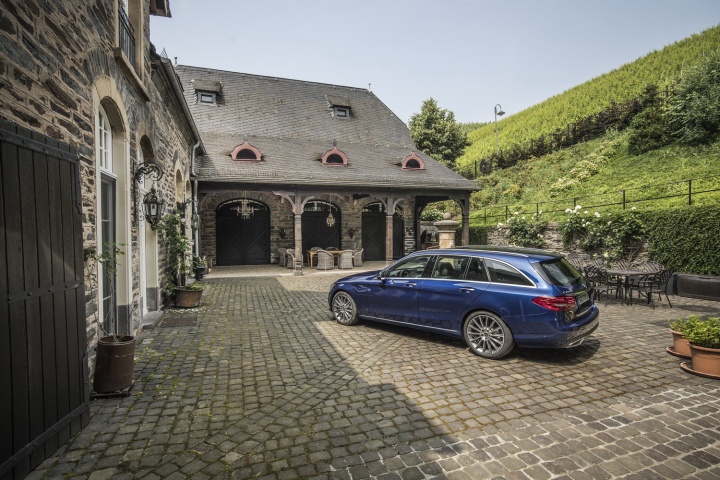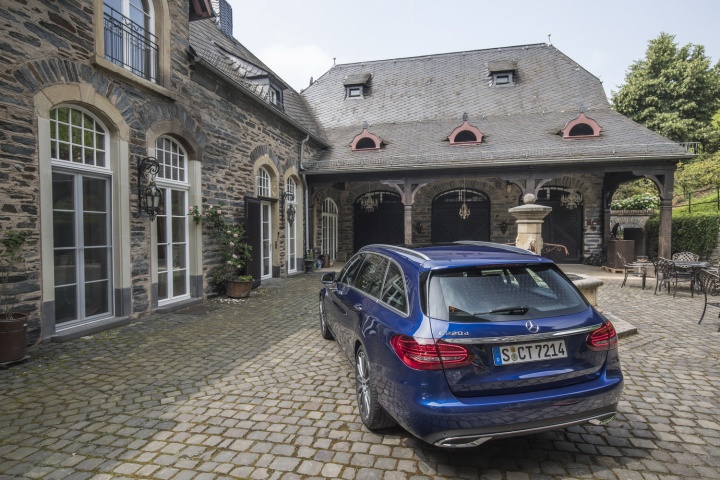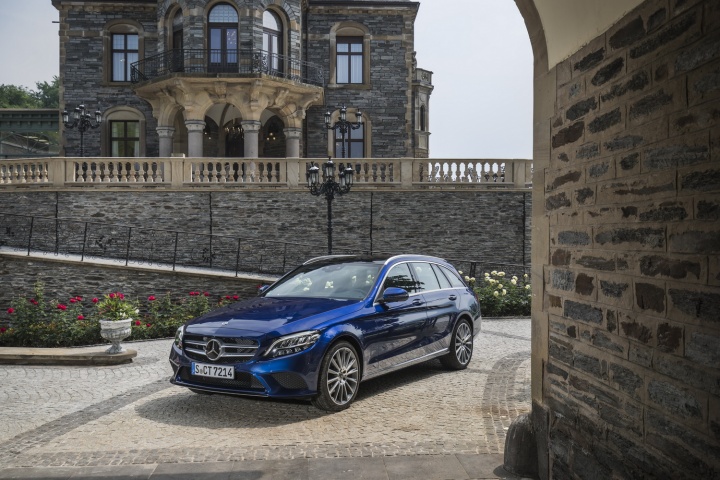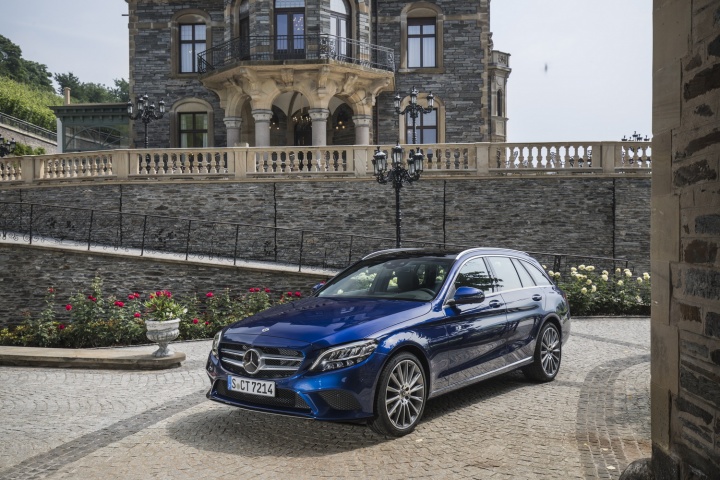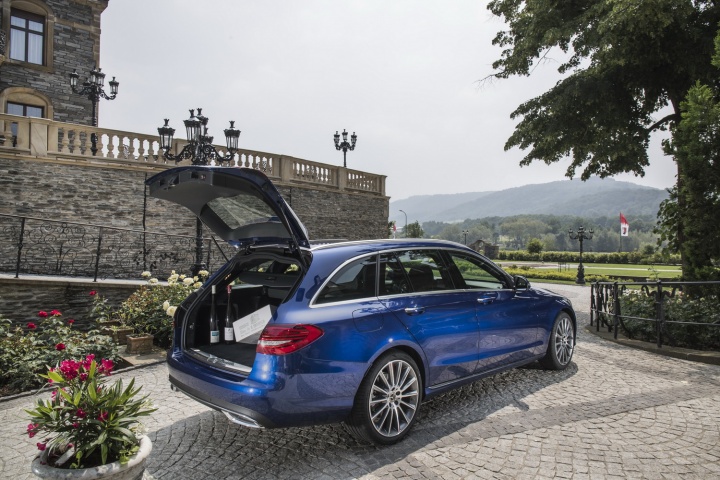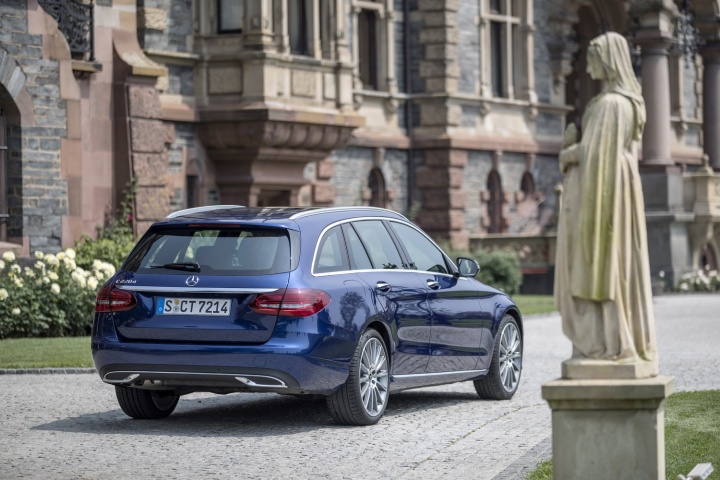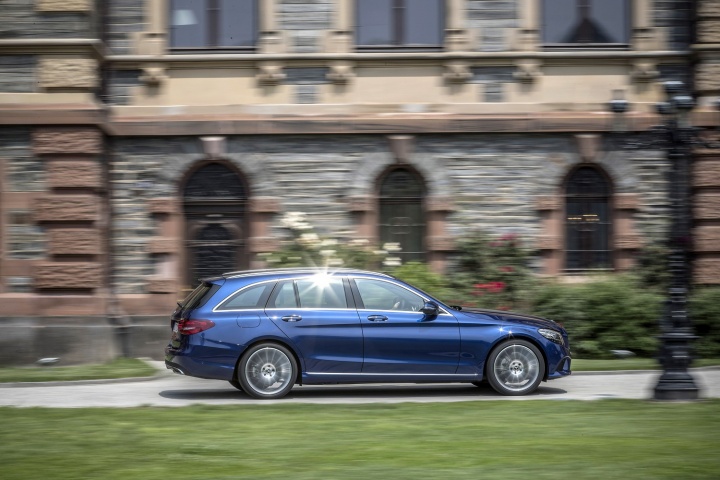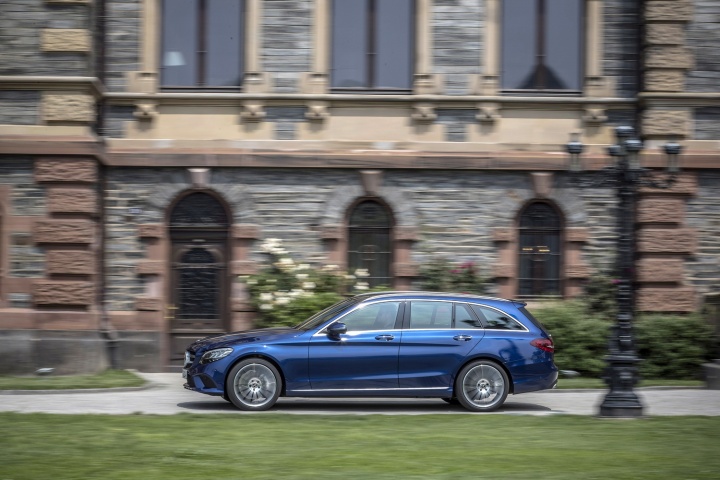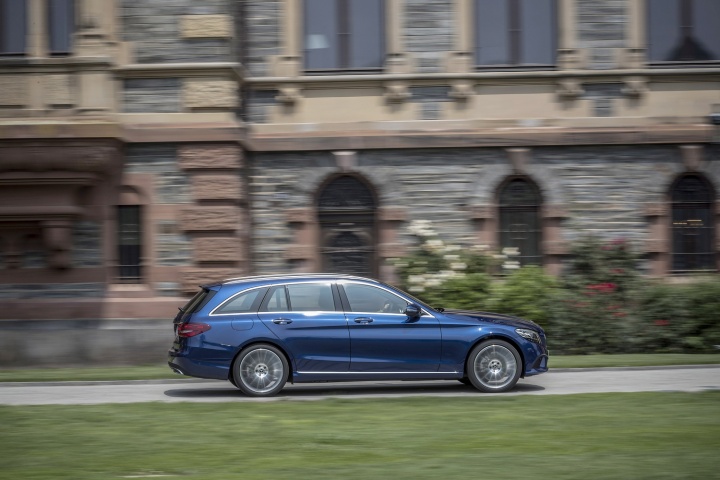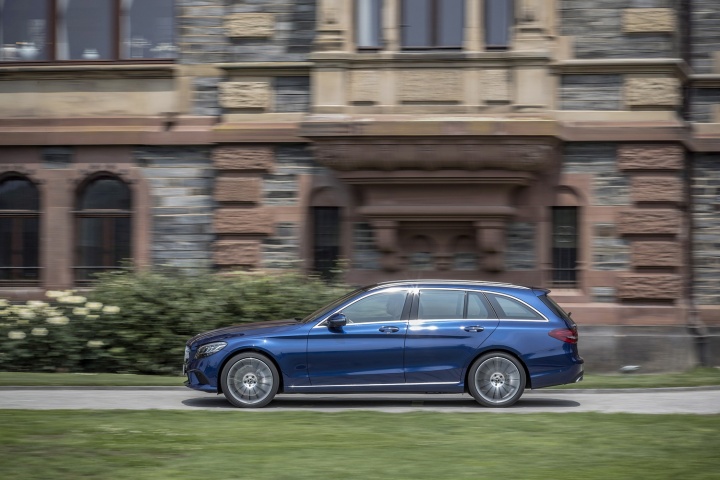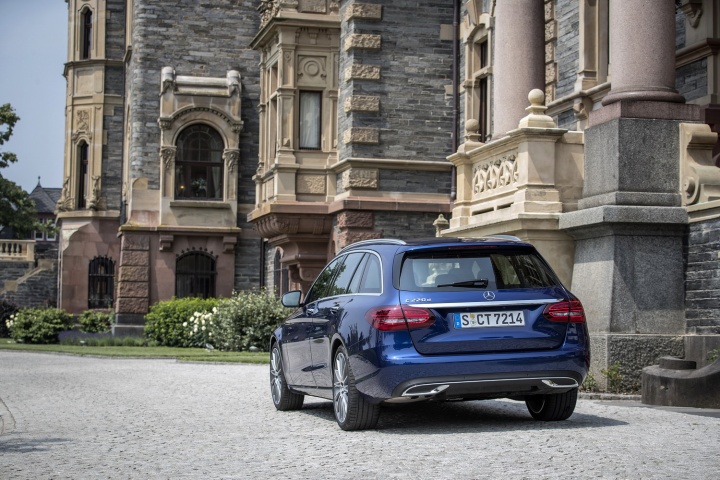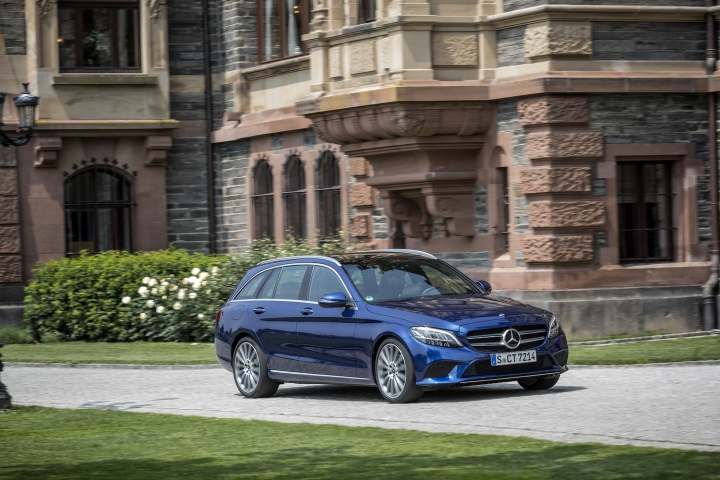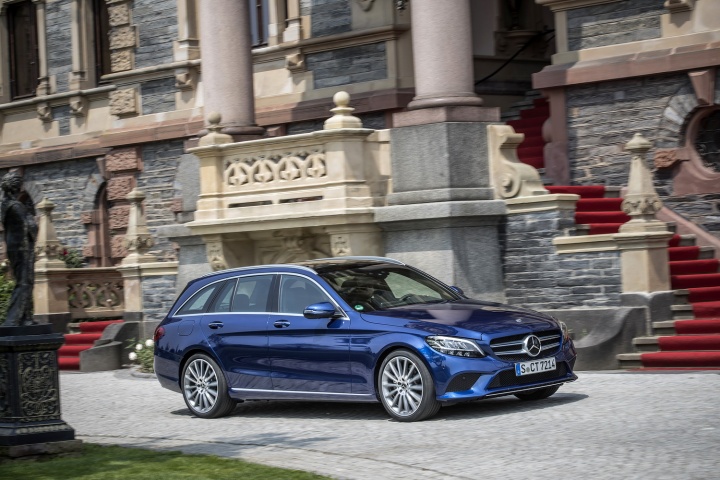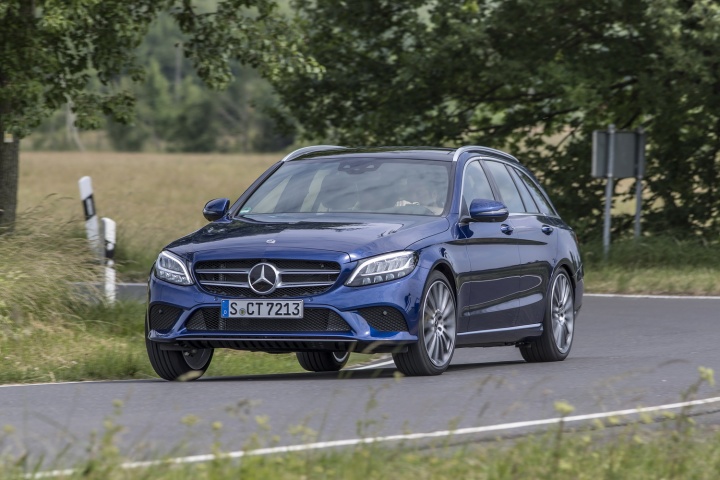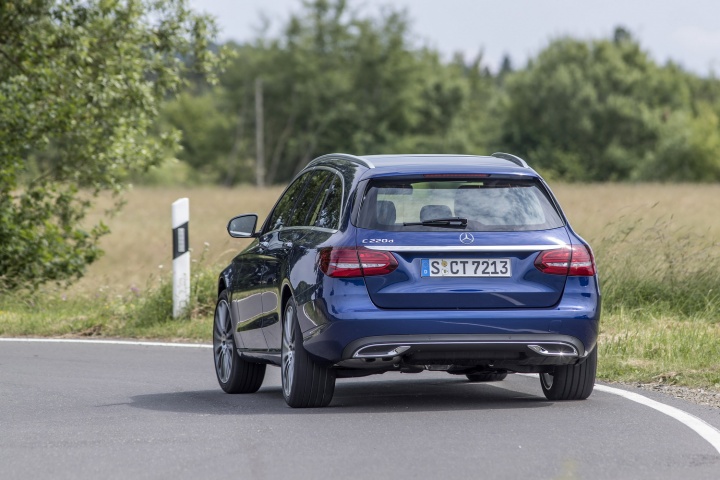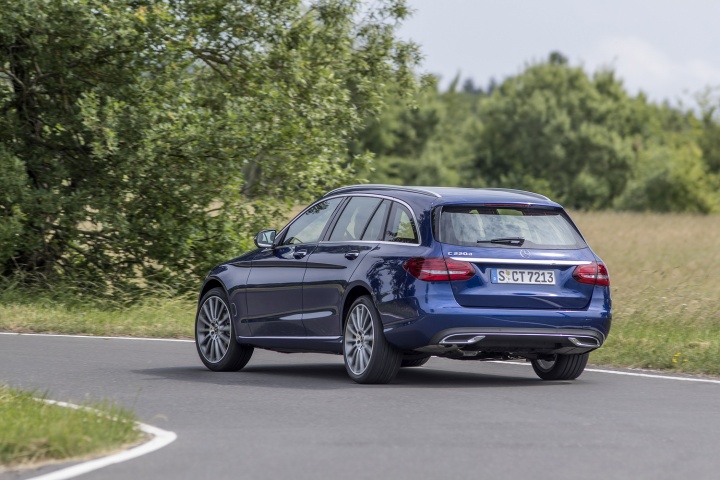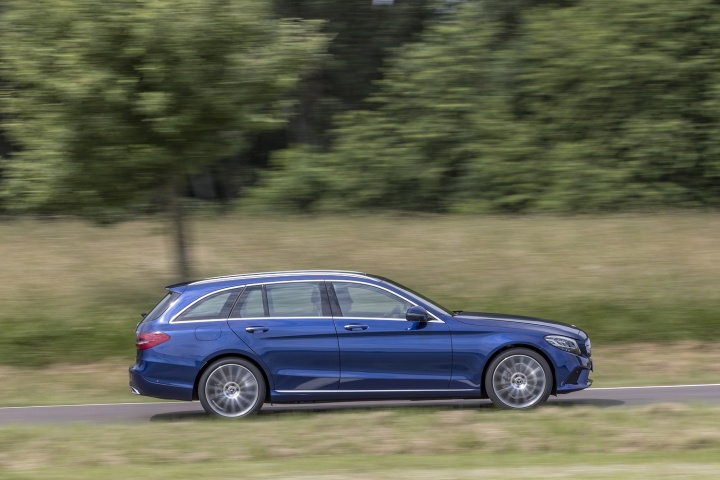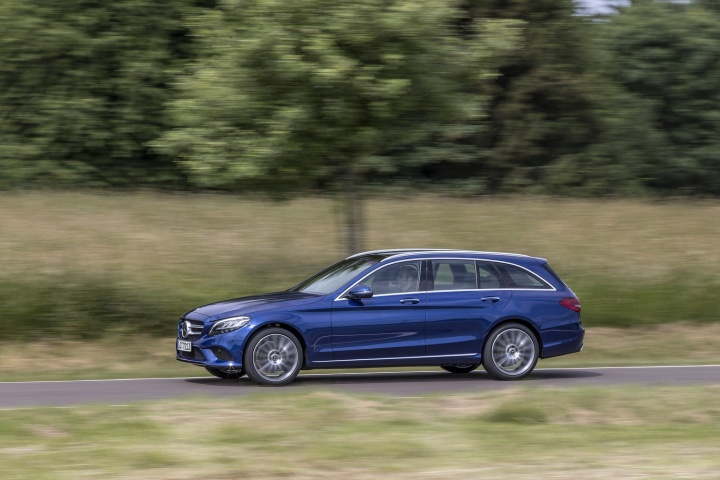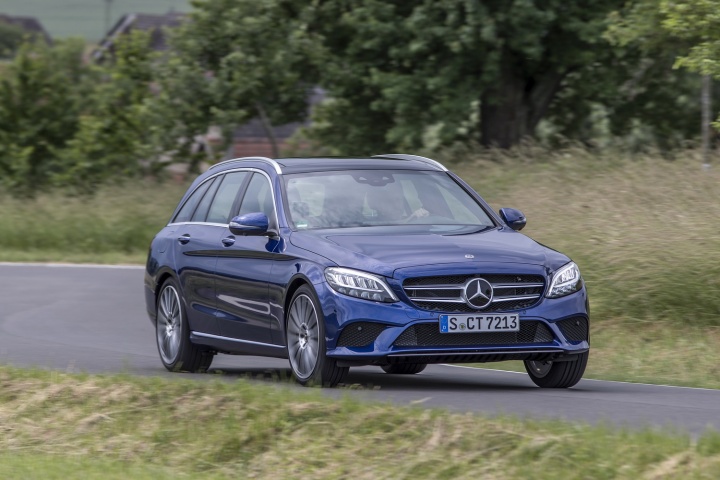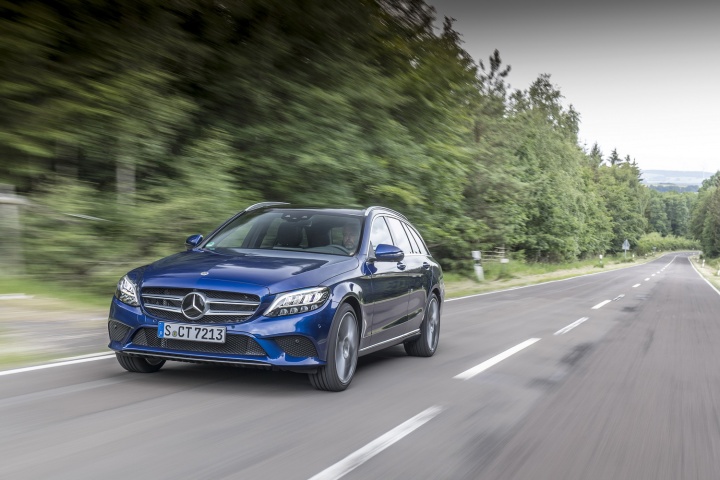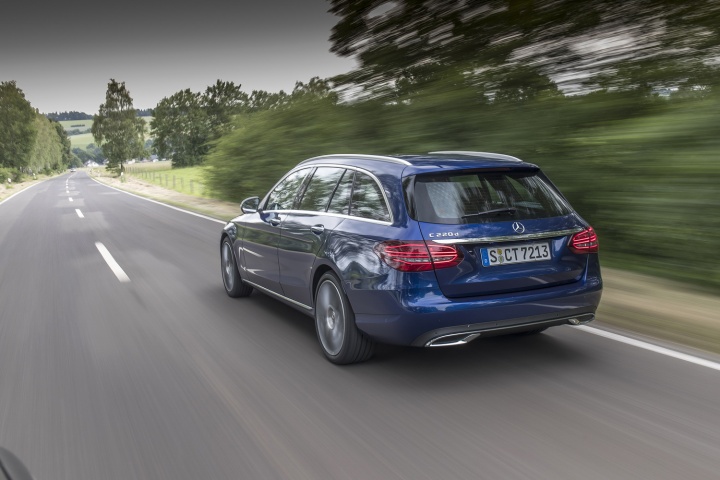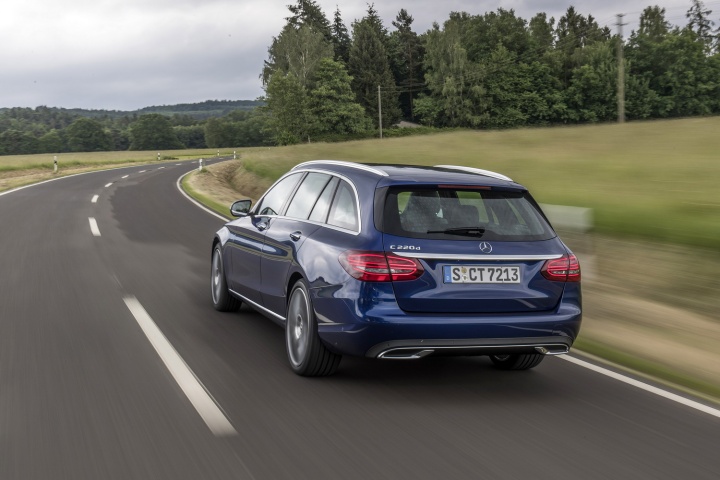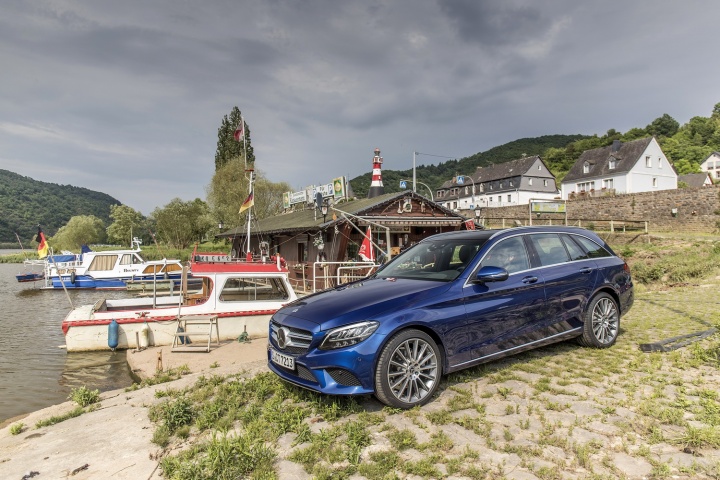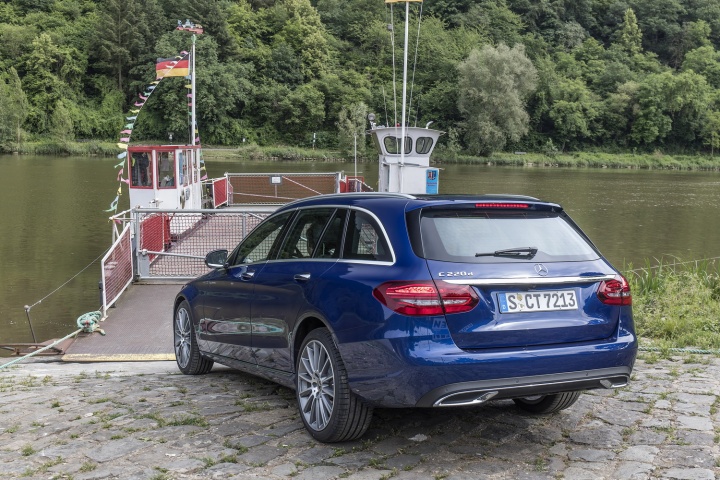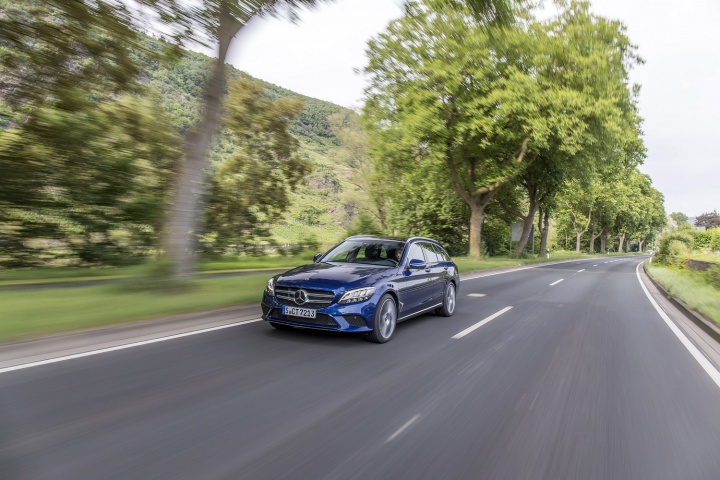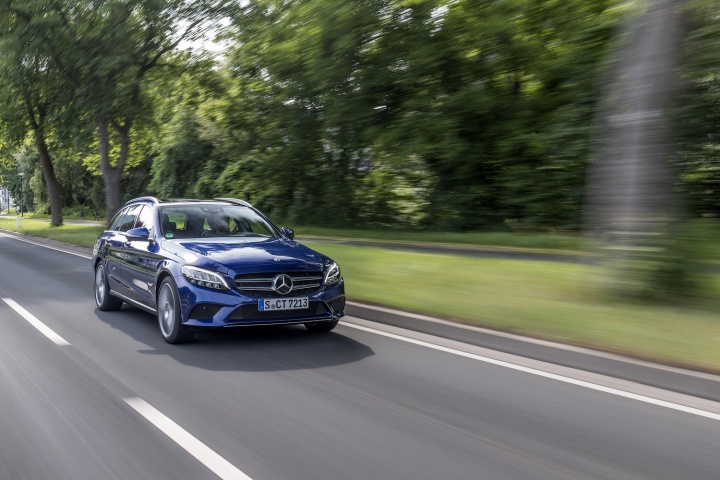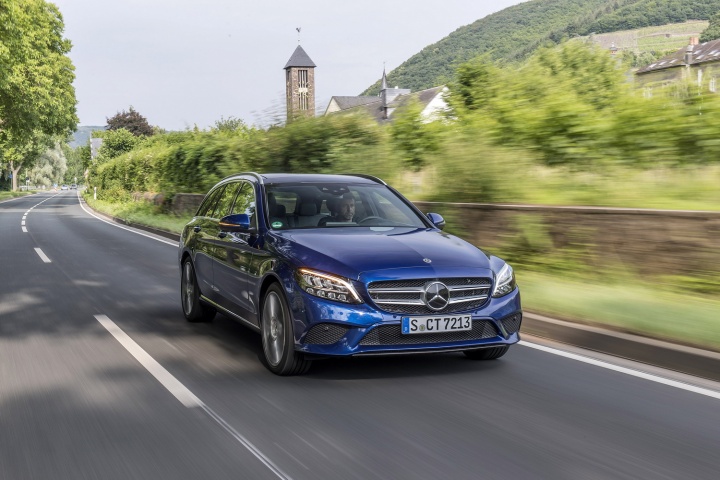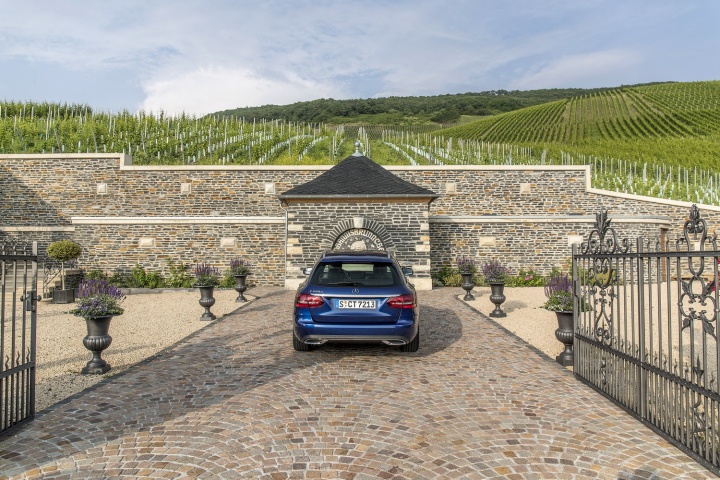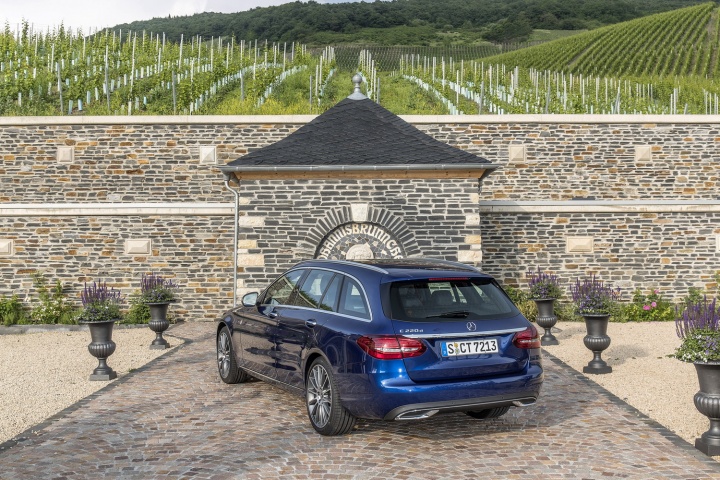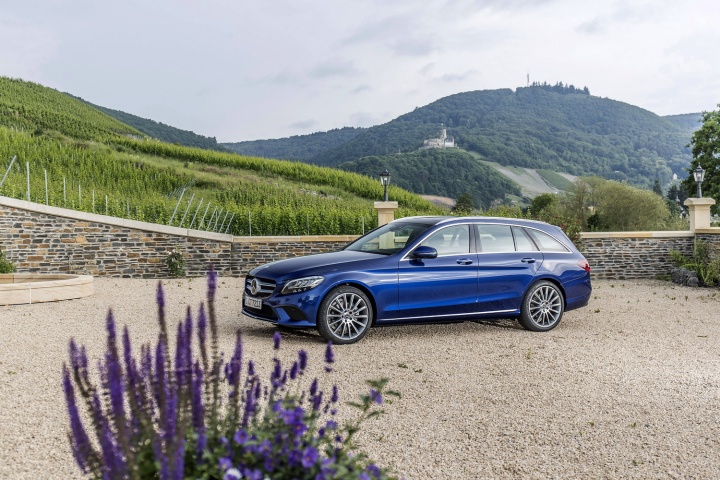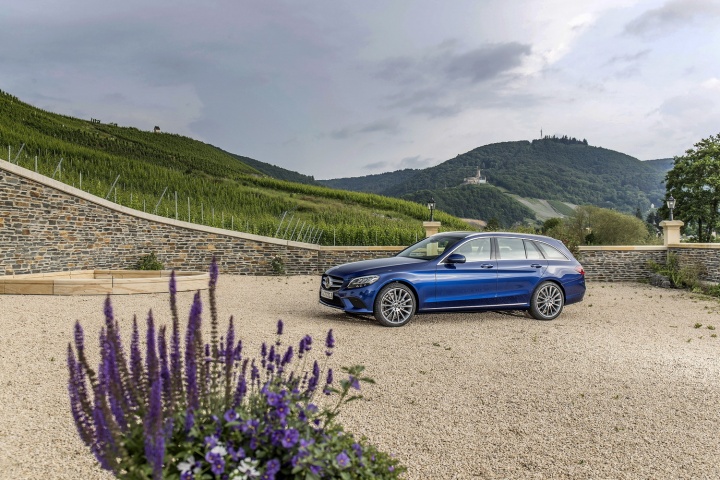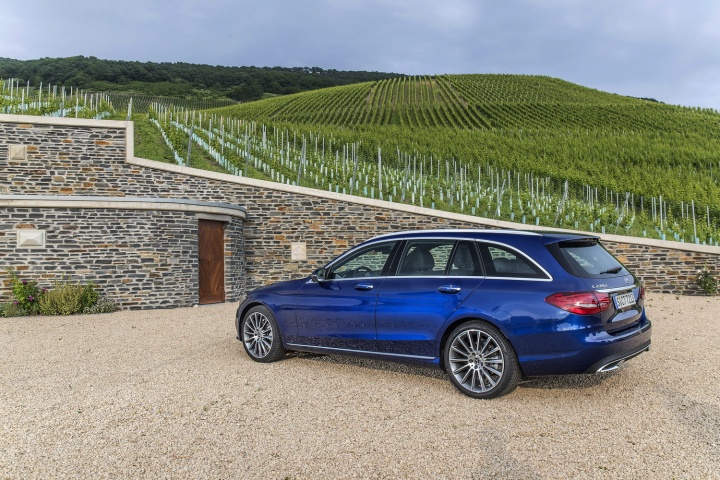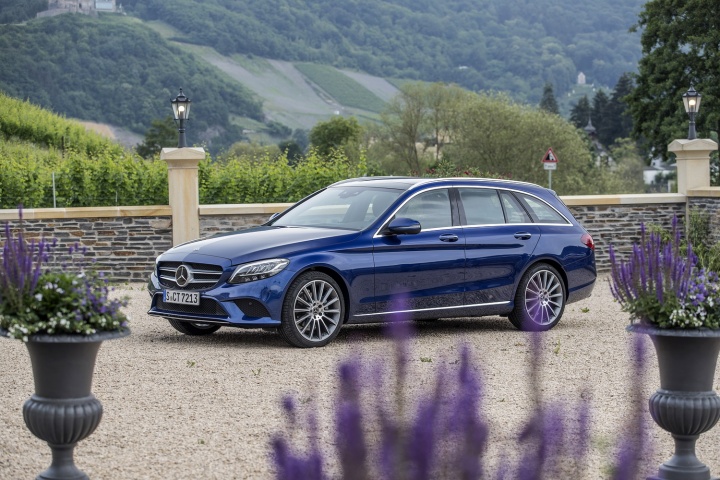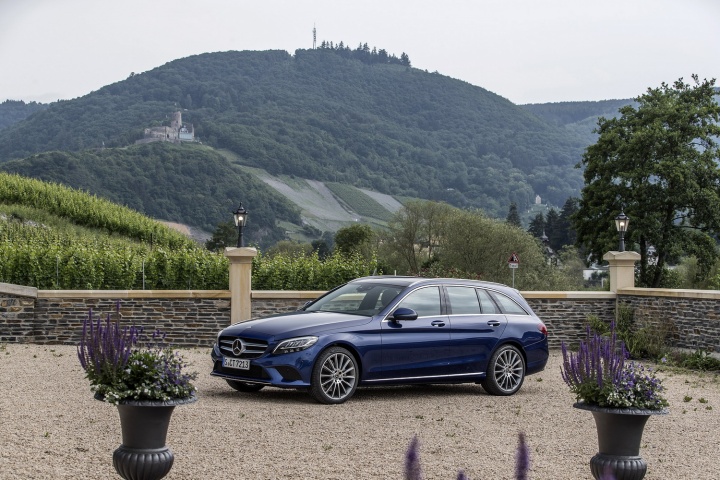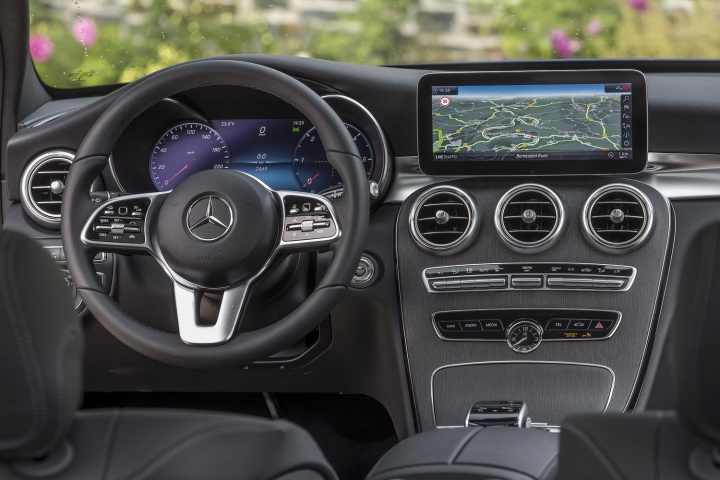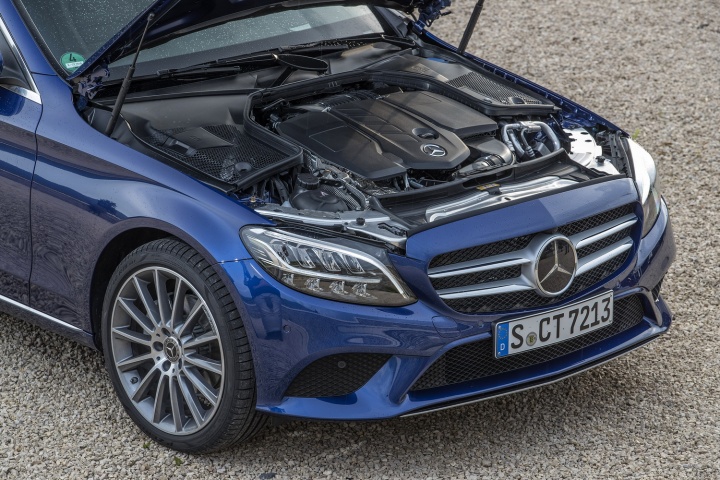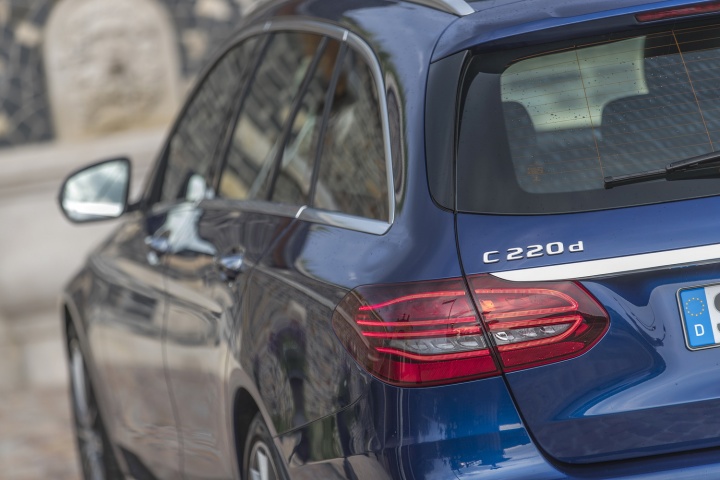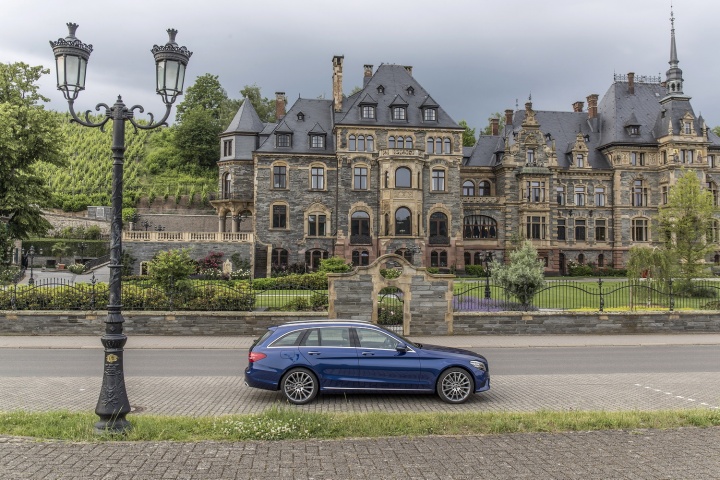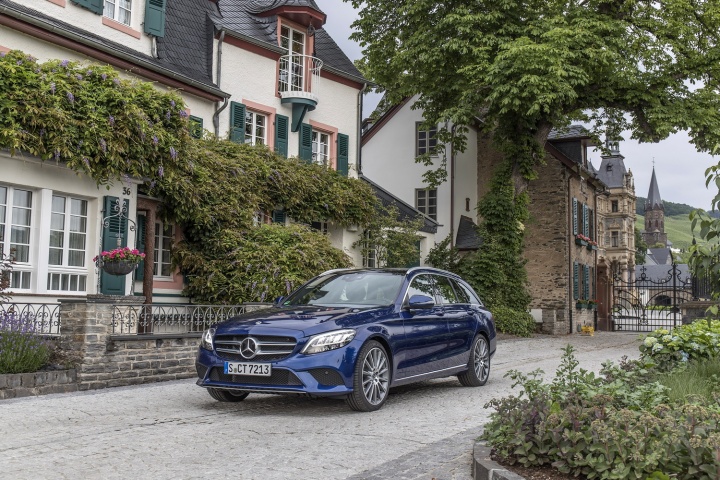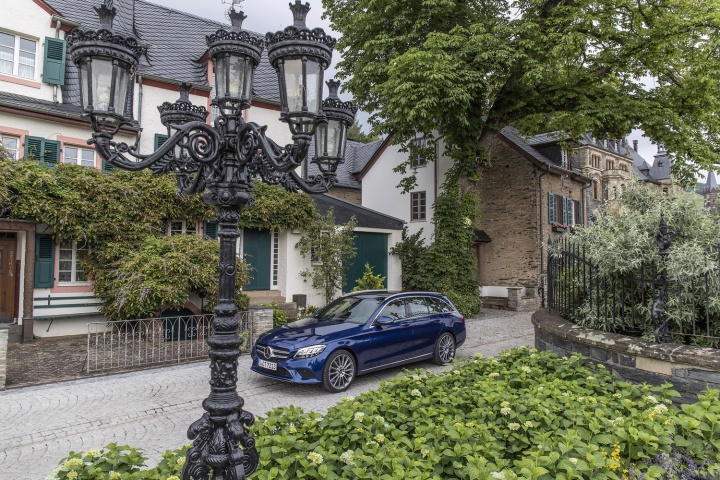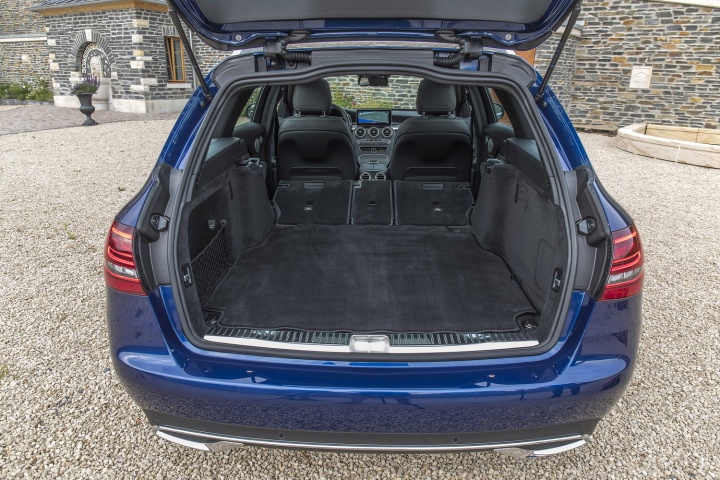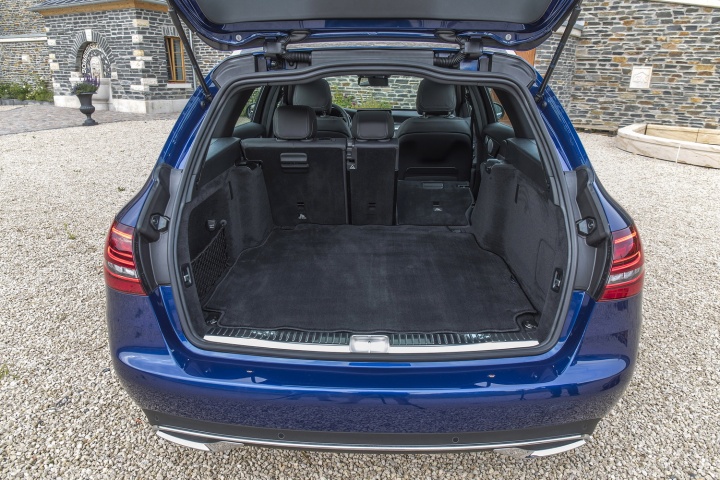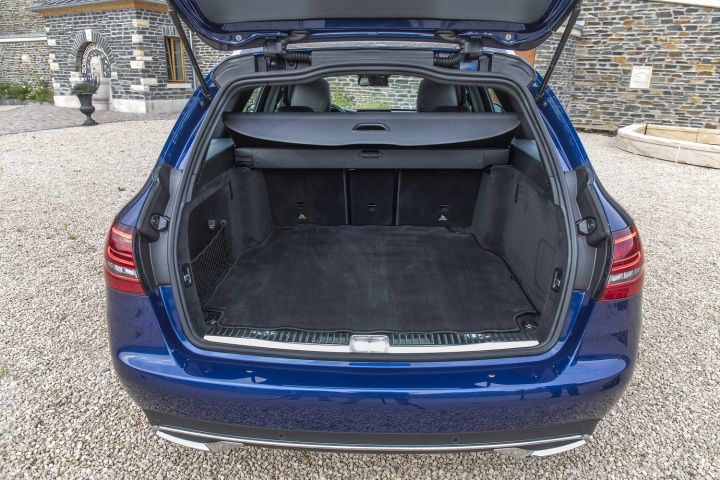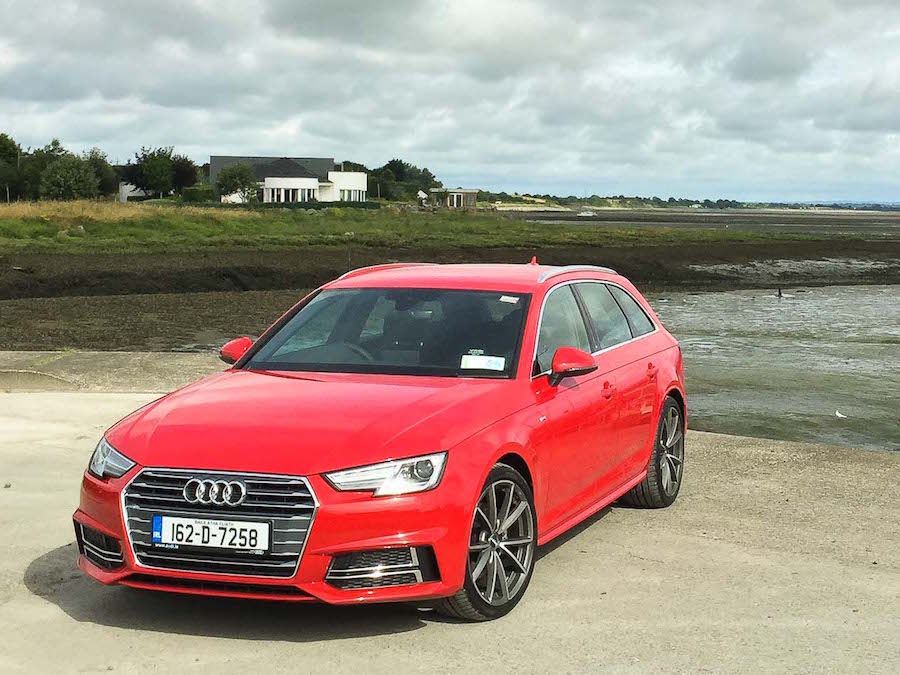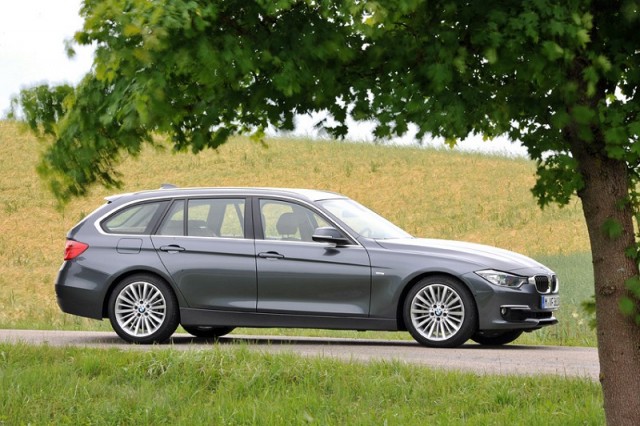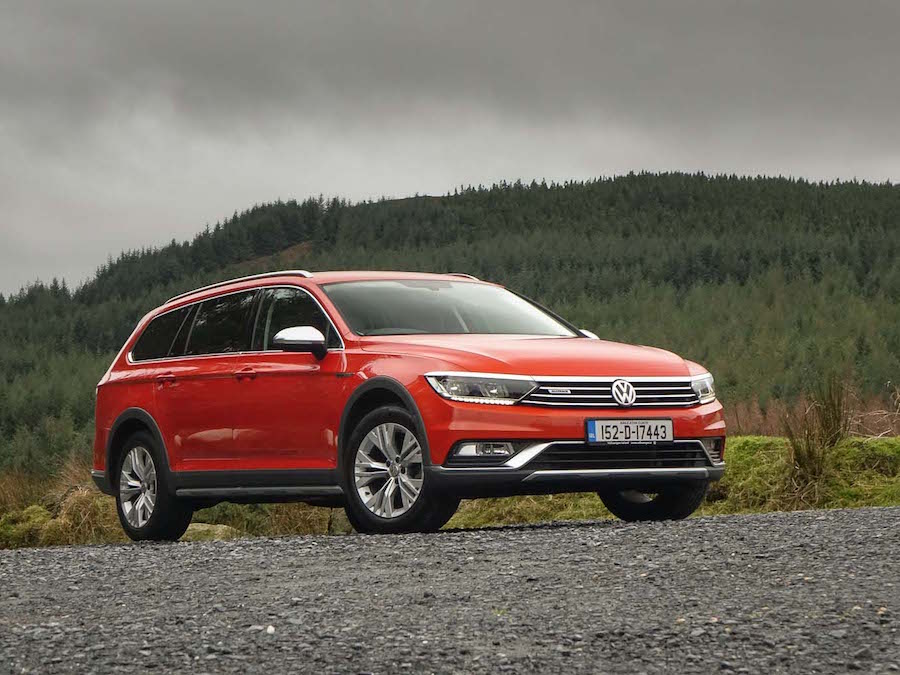The sleek and slick estate body really suits the Mercedes C-Class, and it gets the same chassis and styling tweaks as the rest of the range. The 2.0-litre diesel engine parachuted in from the E-Class is effective and frugal, but still a touch noisy for our ears.
In the metal
For anyone who professes not to like estates; you're wrong. Sorry to be so blunt, but if you're still labouring under the impression that an SUV or a crossover is somehow more useful, more practical, or in any sense more desirable than a well-sorted estate then you've been sold a marketing pup.
I mean, just look at the sleek, low lines of this updated C-Class Estate. It looks, pardon the minor pun, classy. Desirable, yet practical like a fashion model who's good at assembling IKEA flatpacks. And it can carry a few of those, thanks to a seats-up boot volume of 490 litres (that's 55 litres up on the saloon) and a seats-folded capacity of 1,510 litres. For all the swept-back styling, this is still a hugely practical car.
Outside, it gets the same styling tweaks as the rest of the updated C-Class range, which are basically limited to new lights (optional multi-faceted LED systems on our test car), new bumpers, and new air intakes. Oh, and there are some new colour options (including a very handsome 'Emerald Green') and 20 new designs of alloy wheels (including a smart-looking 17-inch wheel that's aerodynamically optimised to bring your CO2 emissions down a touch). Inside, there's the option of a new 10.25-inch central infotainment display and a 12.3-inch TFT all-digital instrument screen (which rather nicely has a setting that apes the classic yellow-on-black instruments of the 1980s).
Driving it
Unlike the new 1.5-litre EQ Boost mild hybrid petrol engines, the 2.0-litre diesel four-cylinder unit in the C-Class is actually quite familiar. It's just not familiar from the C-Class, that's all, as it's the same engine that was introduced in the current E-Class, and has now been brought into the smaller car to replace the aged - and rather noisy - old 2.1-litre unit.
Power, for this 220d version, is a respectable 194hp, with 400Nm of torque on offer from only a little above idle, so performance is better than good - 100km/h comes up in seven seconds dead, and we were just able the tickle the belly of the 230km/h top speed during a prolonged run on a limit-free Autobahn in Germany, at which speed the C-Class felt securely clamped to the road.
It is still a touch noisy, though. We had hoped that by binning the old 2.1 engine and installing this 2.0-litre, the rough-edged noise of the C-Class diesel would be gone. It's not, sadly. It's improved, and the C 220 d is much quieter at a gentle cruise, but as soon as you're back on the throttle the old diesel rattle is there again, which is a shame. It's far from the worst in class in that respect, but there are those who do it better.
Fuel economy should be very good, though. We easily cracked the 50mpg barrier (until we hit those high-speed Autobahn stretches, anyway) and while the latest round of updated NEDC economy and emissions figures has pushed the CO2 numbers up slightly, it's still a Band B1 car, so tax isn't going to be a major cost.
In handling terms, there's not a dramatic difference between this and the outgoing C-Class. The updated dynamic handling package (which adds adjustable dampers to the steering, throttle response and gearbox reactions that alter as you toggle between Sport and Comfort modes) means you can stiffen things up or soften them out as you please, but as is so often the case with such things, the C-Class is best left in its Comfort setting. Ride quality, which, even in Comfort can be occasionally too firm when you're riding on the larger alloy wheel options, turns far too puckish in Sport, and while the extra weight for the steering is welcome through those long, fast Autobahn curves, there's no actual extra feel nor feedback, so you may as well not bother. The C-Class is at its best when it's cutting across country in a swift, yet relaxed, fashion. Despite that still-present diesel rattle, it's a consummate consumer of kilometres.
What you get for your money
The new C-Class doesn't arrive in Ireland until September, so we'll have to wait a while before we have a full idea of prices and specifications, but Mercedes says that prices will rise only marginally over the outgoing model. Safety equipment should get a boost, including new adaptive cruise control that adjusts its speed according to what corners and junctions the satnav says are coming up, and a lane-keeping steering system that can default to following the car in front if the lines on the road become obscured by muck or rain. There's also an updated collision avoidance steering system, a new stereoscopic camera that monitors the road ahead and the choice of some new trims and interior colours.
Summary
Diesel, it seems and despite the headlines, is still the default choice for Irish customers of the Mercedes C-Class (no mad stampede for the petrol doors as yet) and in spite of the SUV tsunami, it's still Mercedes' second-best selling car in Ireland. While the 2.0-litre engine's slight lack of outright refinement is a bit of a disappointment, the C-Class remains a hugely appealing, desirable car and a very practical one in estate form.

